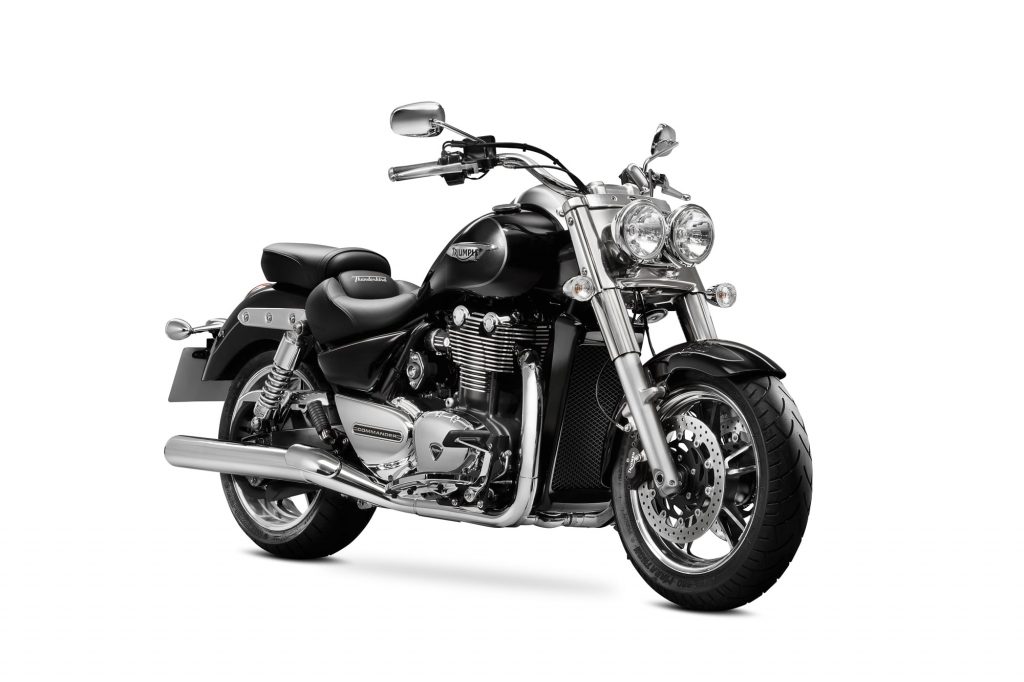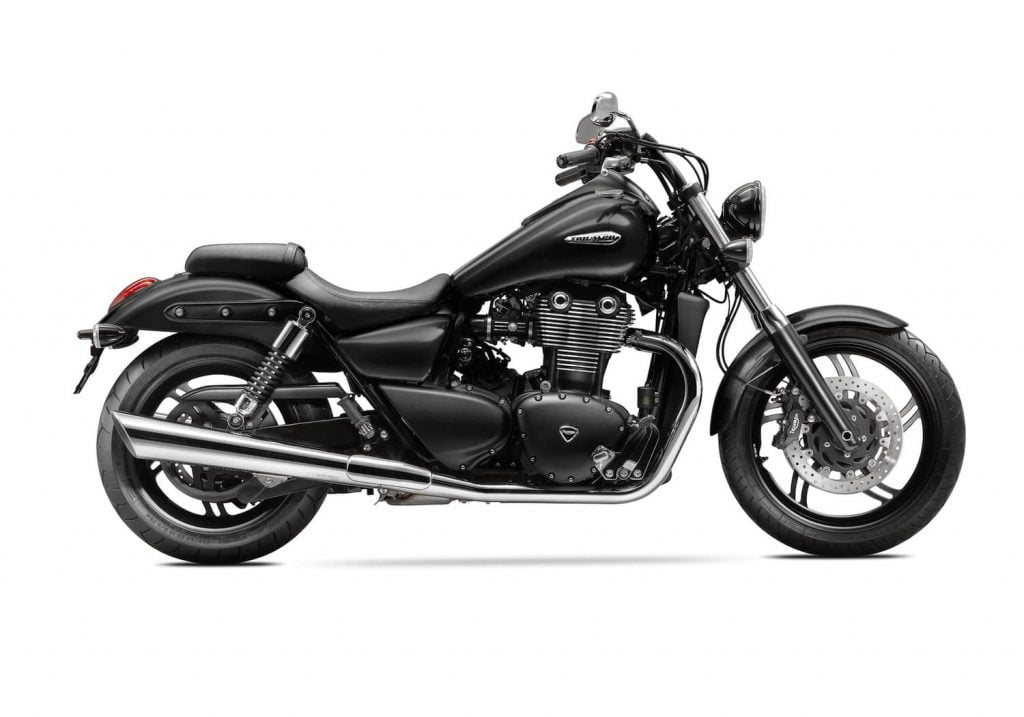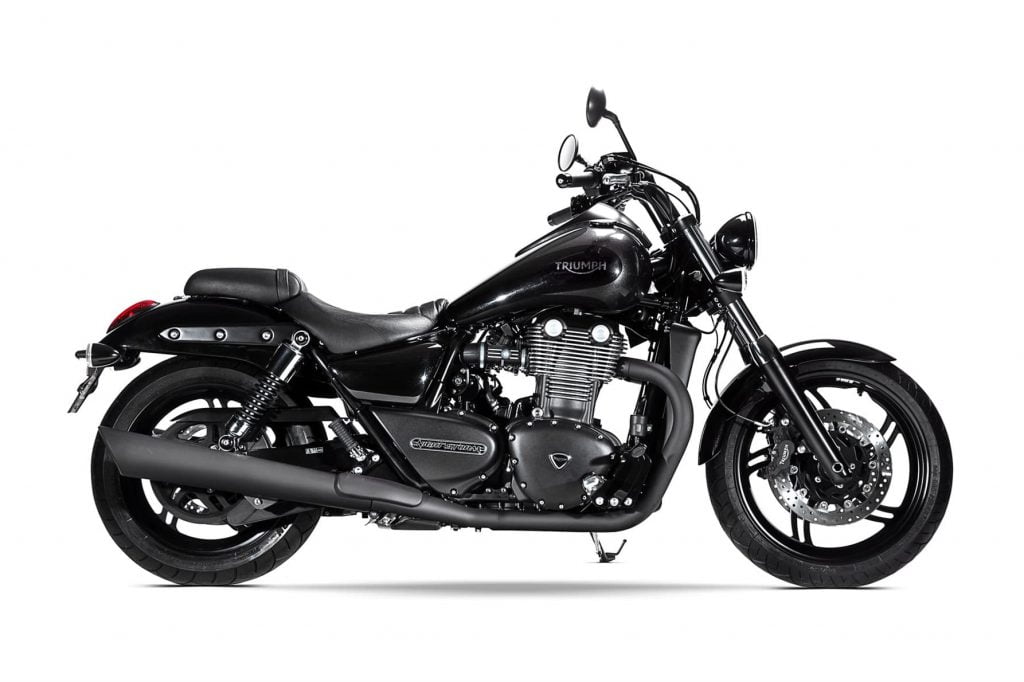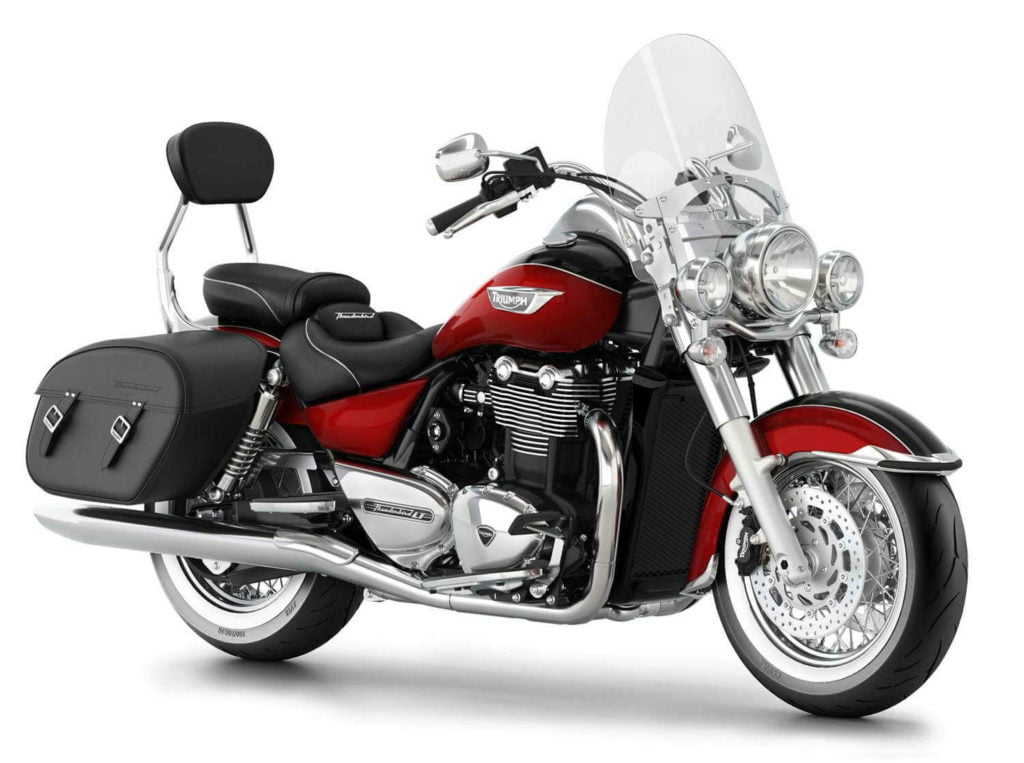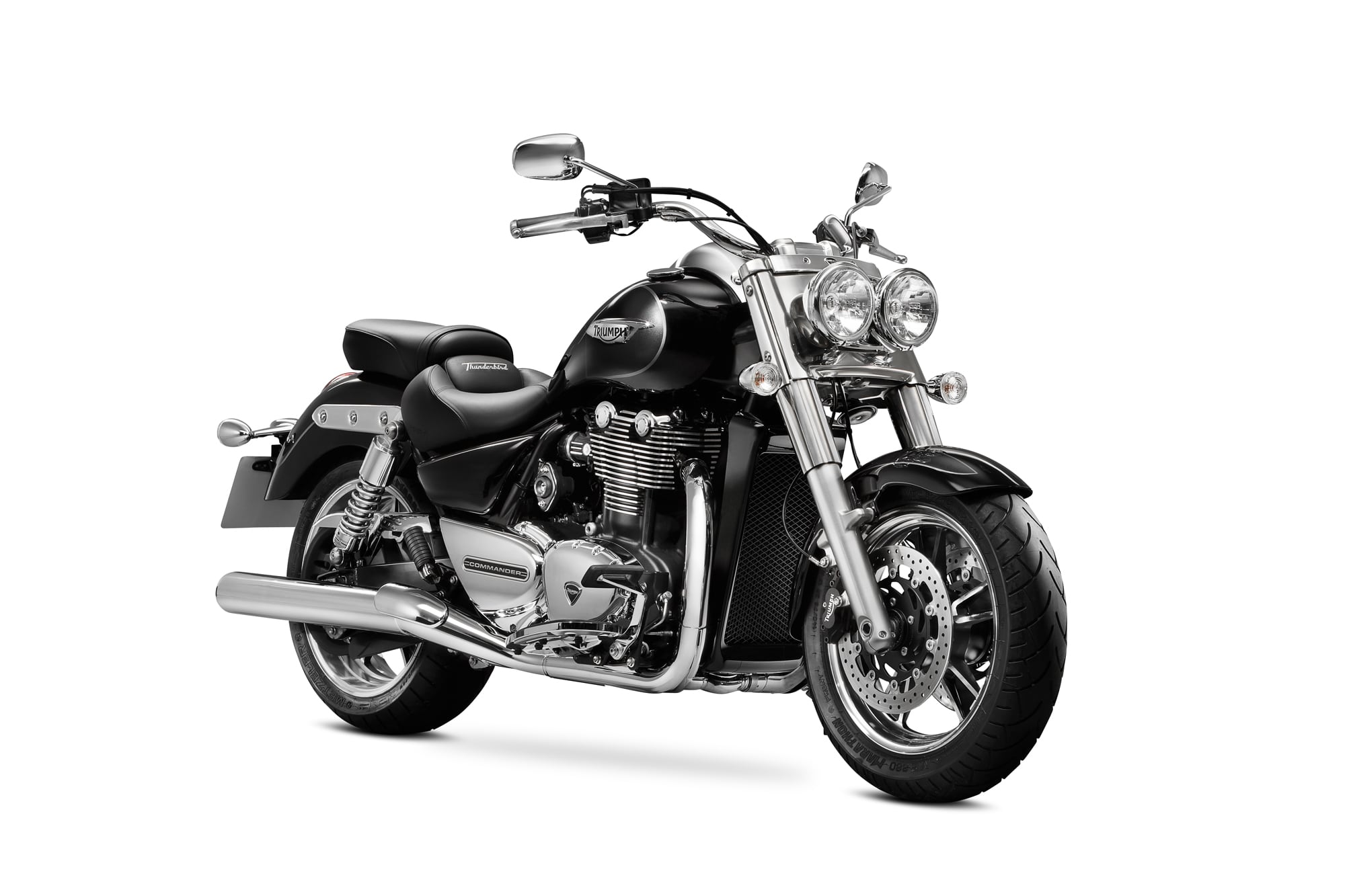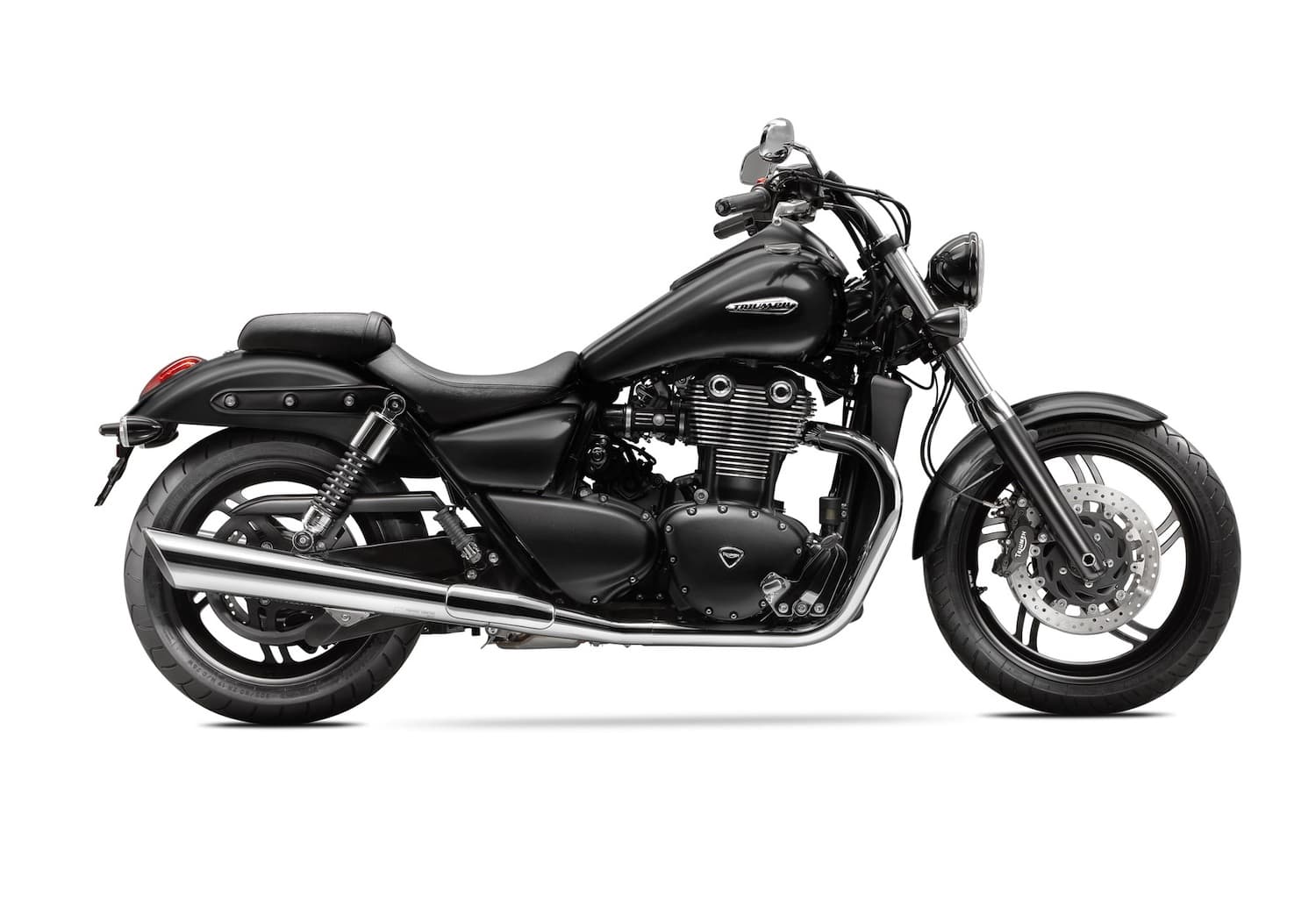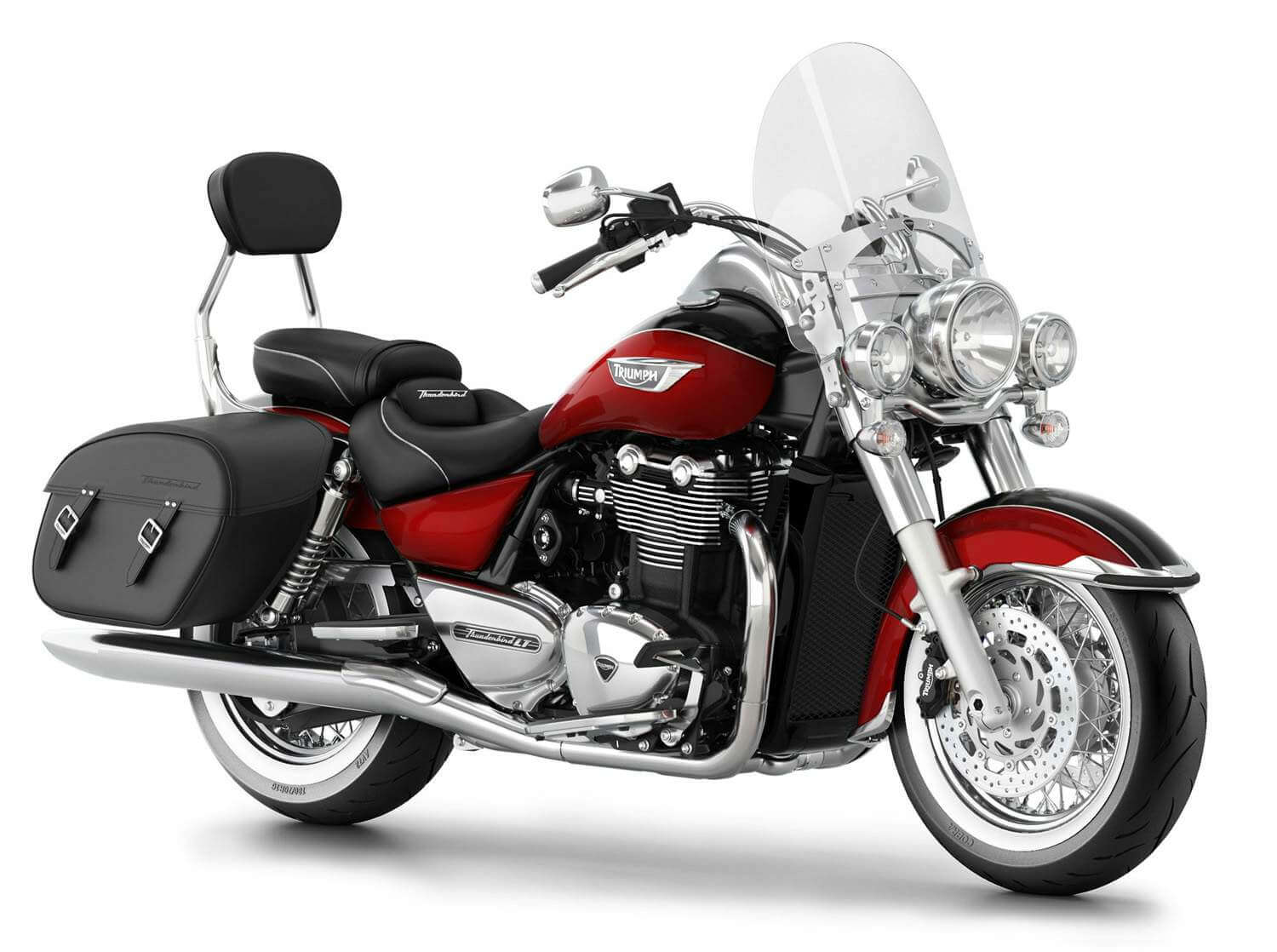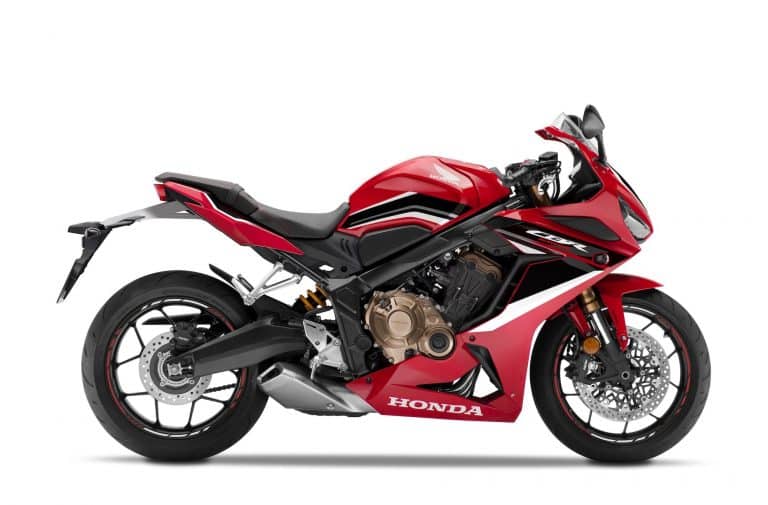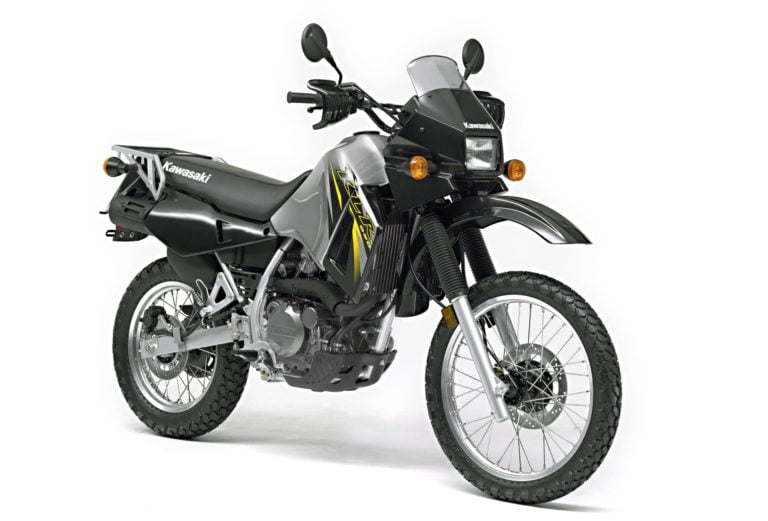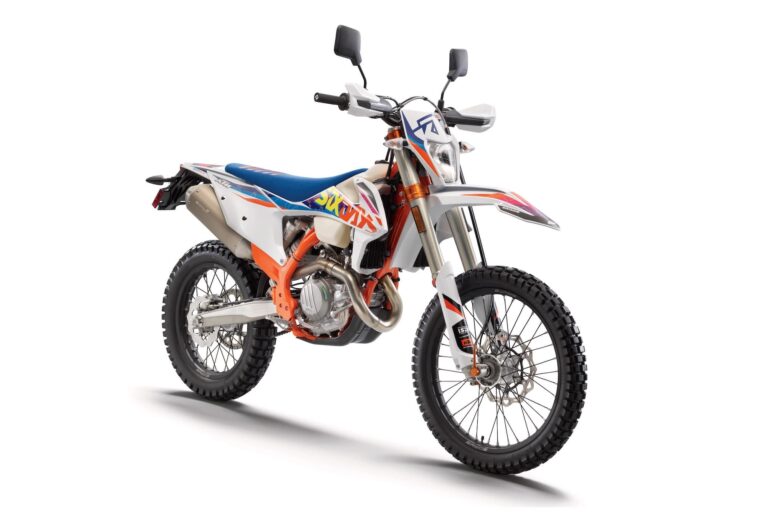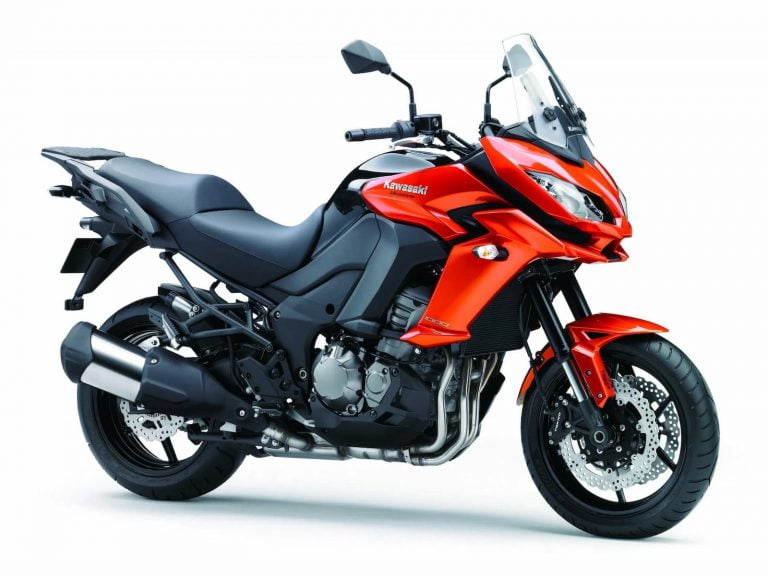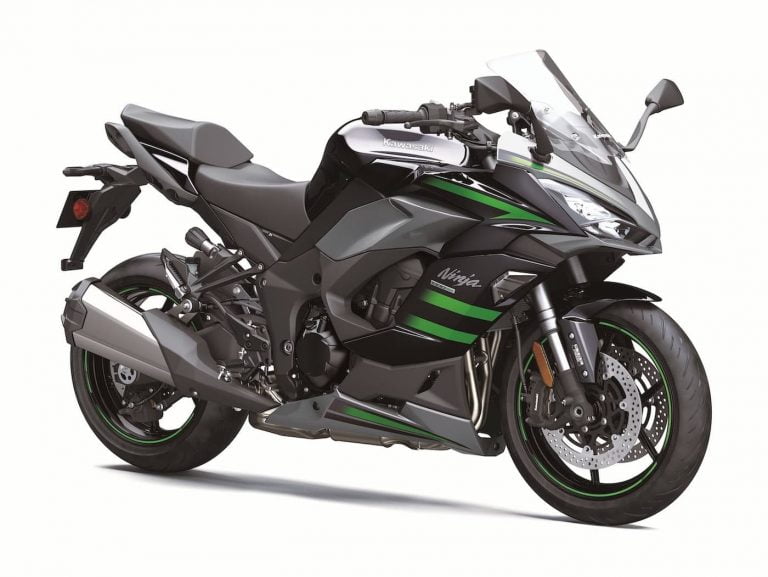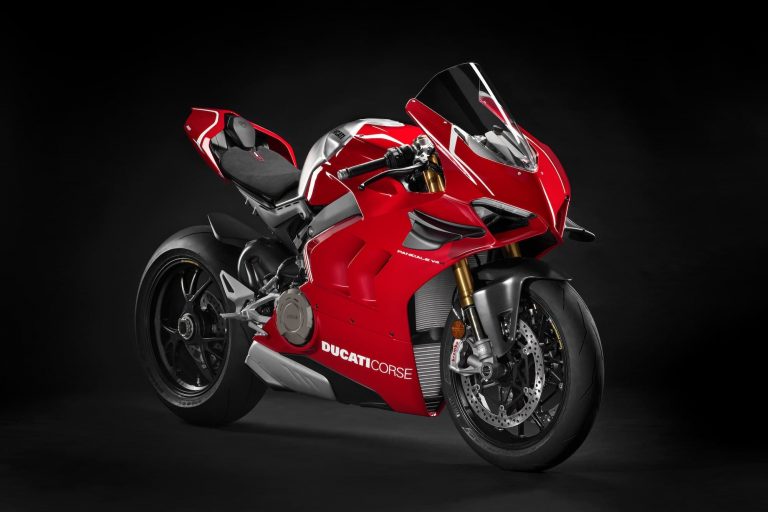Triumph Thunderbird 1699cc (Storm, LT, Commander) Maintenance Schedule
This is the maintenance schedule with associated service intervals for the Triumph Thunderbird motorcycles with a 1699cc engine.
Triumph revived the Thunderbird brand name from 2009 with the original (Hinckley) Triumph Thunderbird.
But they made their first 1699cc Thunderbird with the Triumph Thunderbird Storm in 2011, making standard the big bore kit that was previously an option on the Triumph Thunderbird Storm of the prior year.
The Triumph Thunderbird LT and Commander variants were produced from 2014. The Commander and LT have different style and features, as well as a slightly detuned motor compared to the Storm.
- The Storm (2011)+ is blacked out and tough looking, and has a more powerful motor.
- The Commander (2014+) has more chrome and has a narrower front tyre, and a different rake angle.
- The LT (2014+) has a windscreen, floorboards, and bags, and is heavier.
In terms of maintenance, the Triumph Thunderbirds of this period are a same. All the engines share a 1699cc (1700cc, let’s say) liquid-cooled parallel twin, with dual overhead cams, four valves per cylinder. They all drive the wheel through a 6-speed transmission and a belt drive.
Between the three, the Triumph Thunderbird LT was the more popular motorcycle. Reviewers said the Commander had poorer handling, and owners said the Commander was less comfortable. In the world of big cruisers, comfort is everything!
There was also the Triumph Thunderbird Nightstorm. Even more black!
This site has links from which we earn a commission (which unfortunately nobody can save, not even us). If you appreciate this research work, then please use those links. Thanks.
Triumph Thunderbird Service Intervals
The Triumph Thunderbird has shorter service intervals than other Triumph motors, with 6000 miles / 10000 km or a year between oil and filter changes.
Triumph also requires a valve clearance check and spark plug + air cleaner change every two services (every 12000 miles or 20000 km), though with no time interval on those.
Replace the the brake fluid every two years, too. Triumph doesn’t specify a time-based coolant replacement interval, but a common interval for Triumph coolant is to replace it every 4 years.
Maintenance Schedule for Triumph Thunderbird 1699cc motorcycles
The maintenance schedule for the Triumph Thunderbird is best considered in three parts: daily checks, belt maintenance, and periodic maintenance.
Daily checks
Do these checks on your Triumph Thunderbird before every ride.
| Triumph Thunderbird — Daily / pre-ride checks |
|---|
| Engine – check for leaks |
| Throttle cables – check/ adjust |
| Coolant level – check/adjust |
| Fuel system – check for leaks, chafing etc. |
| Lights, instruments and electrical systems – check |
| Steering – check for free operation |
| Forks – check for leaks/smooth operation |
| Brake fluid levels – check |
| Brake pads – check wear levels |
| Drive belt tension – check and adjust (daily / per the schedule below) |
| Wheels – inspect for damage |
| Tyre wear/tyre damage – check |
| Tyre pressures – check/ adjust |
| Fasteners – inspect visually for security |
| Clutch cable – check/adjust |
| Side stand – check operation |
Drive belt tension
Check the drive belt tension every 2500 miles / 4000 km.
Annual checks
Do the following checks as part of the annual service.
| Triumph Thunderbird — Annual checks |
|---|
| Autoscan – carry out a full Autoscan using the Triumph diagnostic tool |
| ABS ECM – check for stored DTCs |
| Throttle bodies – balance |
| Cooling system – check for leaks, chafing etc. |
| Headstock bearings – check/adjust |
| Brake calipers – check for fluid leaks and seized pistons |
| Brake master cylinders – check for fluid leaks |
| Wheel and belt pulley bearings – check for wear/smooth operation |
Periodic maintenance
Below is the maintenance schedule for the Triumph Thunderbird.
Notes
- The break-in schedule is not shown as this motorcycle is no longer produced new.
- At the end of the maintenance schedule, keep following it in the pattern shown.
- Include the daily checks above in all maintenance services.
| mi x 1000 | 6 | 12 | 18 | 24 | |
|---|---|---|---|---|---|
| km x 1000 | 10 | 20 | 30 | 40 | Every |
| Carry out annual service checklist and daily checklist (above) | • | • | • | • | Year |
| Engine oil – renew (Castrol Power RS Racing 4T 10W-40) | • | • | • | • | Year |
| Engine oil filter – renew (HF204RC) | • | • | • | • | Year |
| Valve clearances – check | • | • | |||
| Air filter – renew (TB-1610) | • | • | |||
| Spark plugs – check | • | • | |||
| Spark plugs – renew (NGK DPR6EA-9, 2 per cylinder — see DPR6EA-9 4-pack) | • | • | |||
| Coolant – renew (Triumph HD4X or an alternative) | • | • | |||
| Headstock bearings – lubricate | • | • | |||
| Fork oil – renew | • | ||||
| Brake fluid – renew (Castrol DOT 4) | 2 years | ||||
| Fuel and evaporative loss hoses (if fitted) – renew | 4 years |
About the Triumph Thunderbird 1700
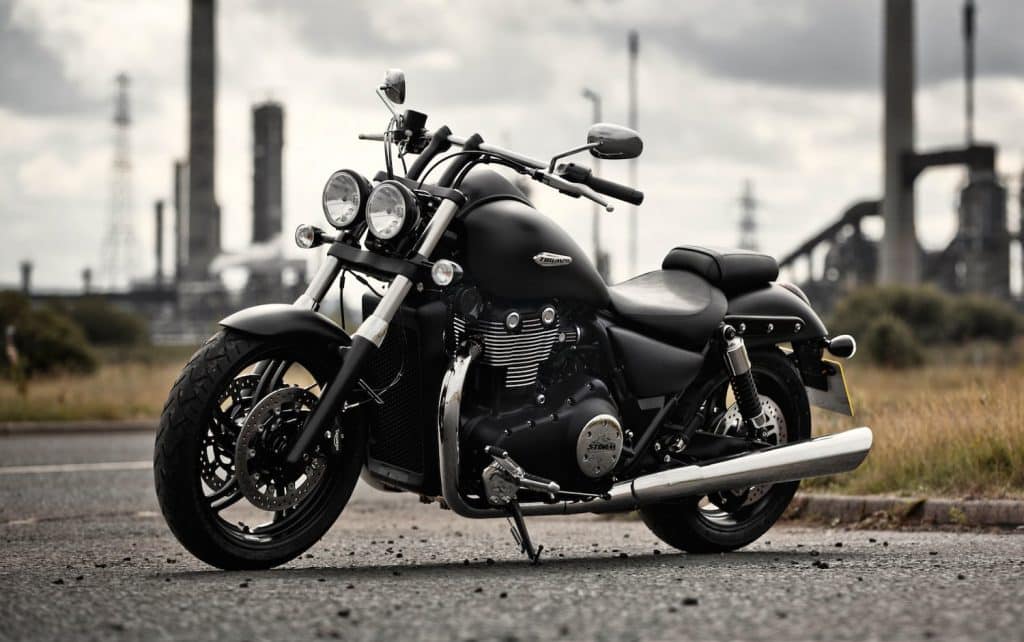
Triumph has always made a huge range of motorcycles. They make racy sportbikes, upright standards, and massive cruisers, and the Thunderbird range fits into this last category.
The Thunderbird 1699 cc range made its appearance first in 2009 and it has been popular ever since. They’re well-built, good-looking, and very reliable. (Purely from a maintenance perspective, I personally love having a parallel twin rather than a V — it’s just easier to get at the one cylinder head, and there are fewer gaskets to fail.)
Triumph’s Thunderbird evolved into the Storm, and now to the LT and Commander. All of the Thunderbird motorcycles share the same basic platform of a 1699 cc parallel twin with a 270-degree crankshaft. The engine is a DOHC 4-valve-per-cylinder motor that’s liquid-cooled, and it puts power down through a belt (much like many other big cruisers).
The engine puts down 73 kW (98 hp) @ 5,200 rpm, but what’s more impressive is the torque figure — 156 Nm (115 ft-lb), peaking at a low, low 2950 rpm. A lot of torque is available earlier than that, too. So the Triumph Thunderbird definitely has the ability to spin the wheels and make a lot of noise, just like the big V-twin cruisers from which it’s trying to take attention.
Like other cruisers, the Thunderbird has a very low 700mm (27.6 in) seat height, which makes it very easy to ride for a broad spectrum of users.
All motorcycles in the Thunderbird range share a big-bore liquid-cooled DOHC parallel twin configuration, and all the engines have a 270-degree firing interval. They put power down through a six-speed transmission and a belt drive. But there are some spec differences — see below.
See the specs below for comparison. The 1600cc Thunderbird is shown too for comparison’s sake.
| Model | Thunderbird (for comparison) | Thunderbird Storm | Commander | LT |
|---|---|---|---|---|
| Years | 2010 | 2011 | 2014 | 2014 |
| Engine capacity | 1596 cc | 1699 cc | 1699 cc | 1699 cc |
| Peak power | 84.5 PS / 83.3 bhp / 62 kW @ 4800 rpm | 98 PS / 97 bhp / 72 kW @ 5200 rpm | 94 PS / 93 bhp / 69 kW @ 5400 rpm | 94 PS / 93 bhp / 69 kW @ 5400 rpm |
| Peak torque | 149.5 Nm / 110 ft-lbs @ 2400rpm | 156 Nm / 115 ft-lbs @ 2950 rpm | 151 Nm / 111 ft-lb @ 3500 rpm | 151 Nm / 111 ft-lb @ 3500 rpm |
| Wheel /tyre type | Cast rims, tubeless tyres | Cast rims, tubeless tyres | Cast rims, tubeless tyres | Wire-spoked, tube tyres |
| Front tyre | 120/70 ZR 19 | 120/70 R 19 | 140/75 ZR 17 | 150/80 R 16 |
| Rear tyre | 200/50 ZR 17 | 200/50 R 17 | 200/50 ZR 15 | 180/70 R 16 |
| Stuff | – | – | – | Bags, backrest, Wind shield, more lights |
| Wet weight | 339 kg (746 lb) | 339 kg (746 lb) | 348 kg (767 lb) | 380 kg (838 lb) |
The specifications above are as claimed by the manual, though it does differ slightly regionally.
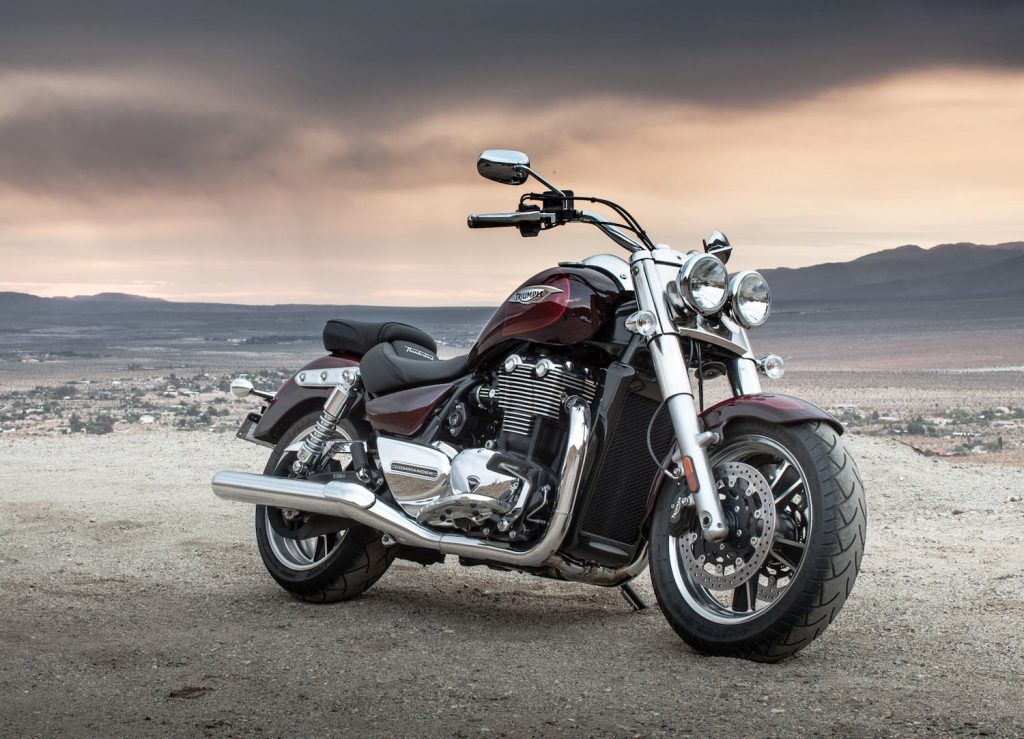
The Thunderbird motorcycles all share Showa 47mm forks, and a Showa shock with adjustable preload. Brakes are twin 310mm floating discs, with Nissin 4-piston fixed calipers up front, and a Brembo 2-piston caliper at the rear, also on a 310mm disc.
Electronics are light — ABS is an option (standard in some markets), with an analogue speedo/rev counter and an LCD trip computer. It’s enough!
The tyre sizes and types changed throughout the Triumph Thunderbird range. Of course, there’s some flexibility in what can be fitted, other than that the tubed spoked wheels on the LT need a tyre that can handle tubes.
Triumph discontinued the Thunderbird range of motorcycles after the 2018 model year, focusing thereafter on the Triumph Rocket 3 line as their big-bore cruisers.
Manual for the Triumph Thunderbird LT and Commander
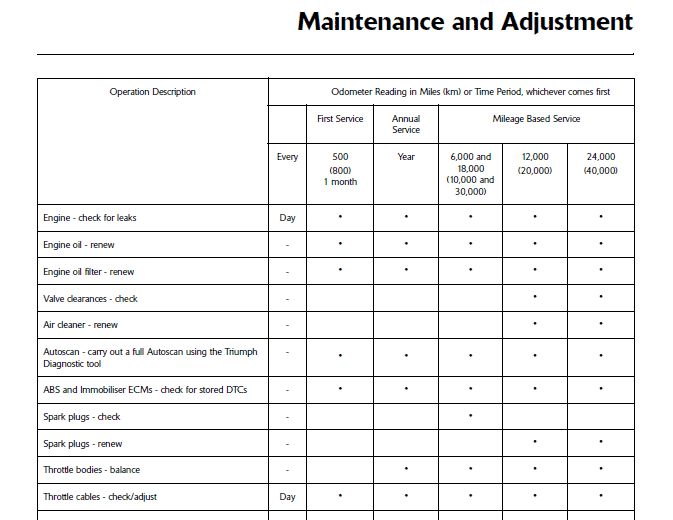
The above maintenance schedule comes directly from the user’s manual for the Triumph Thunderbird LT, which is available on the Triumph website.
